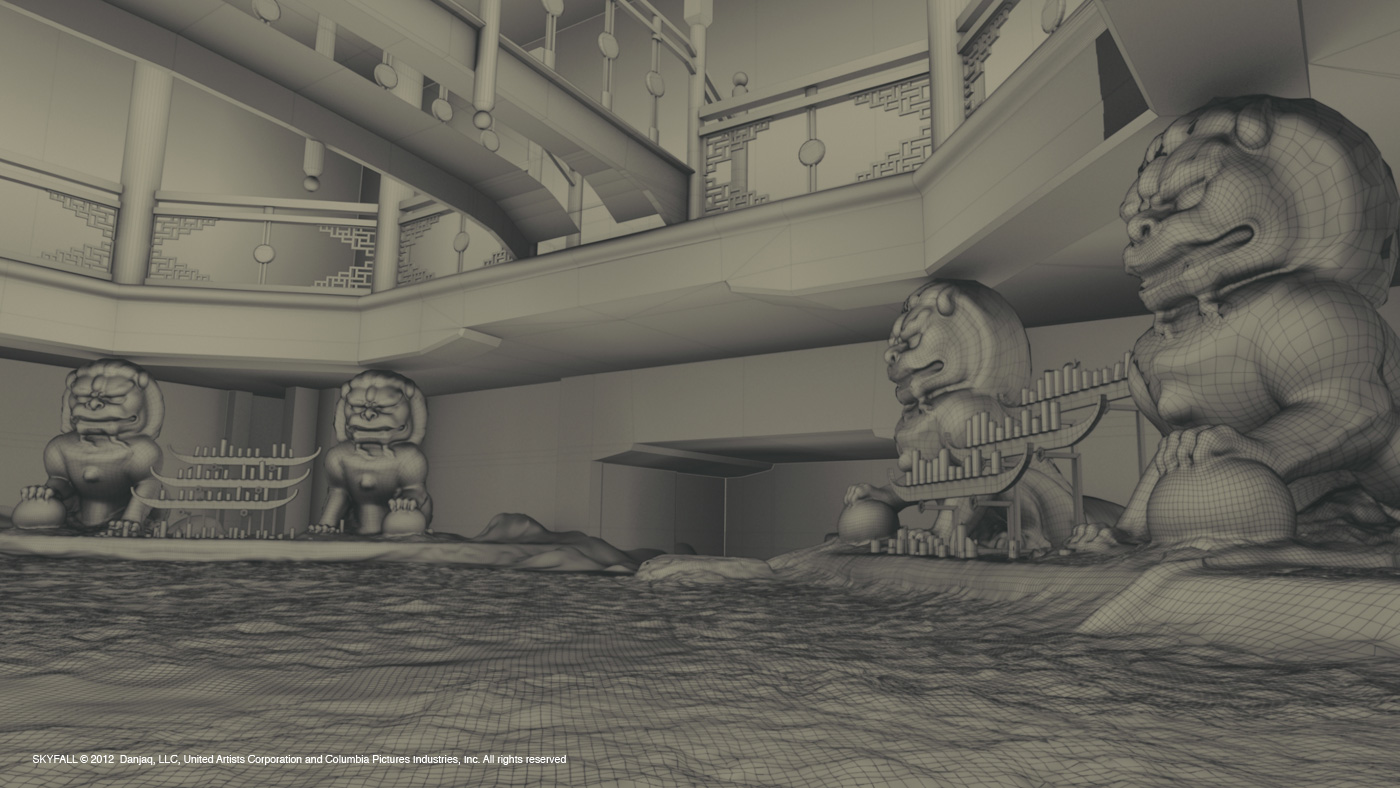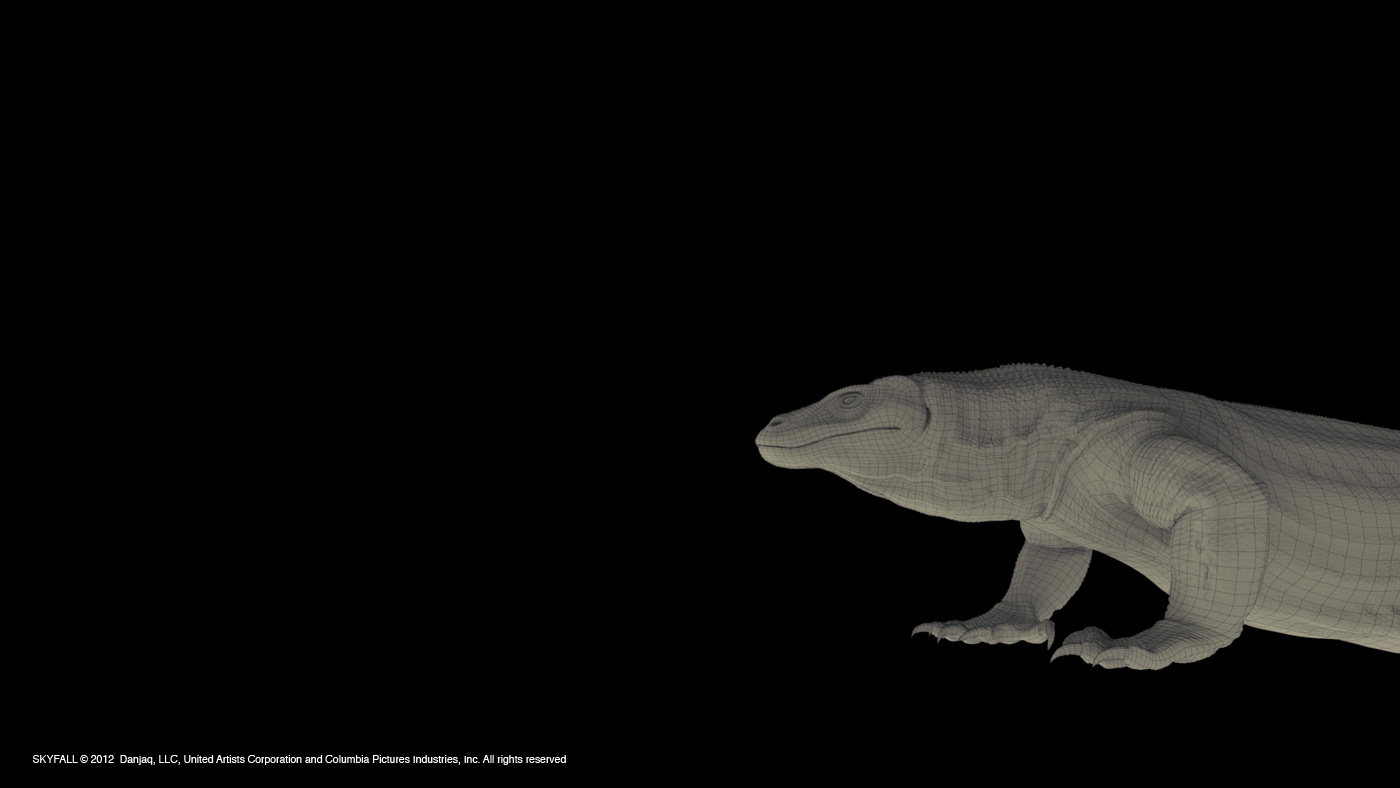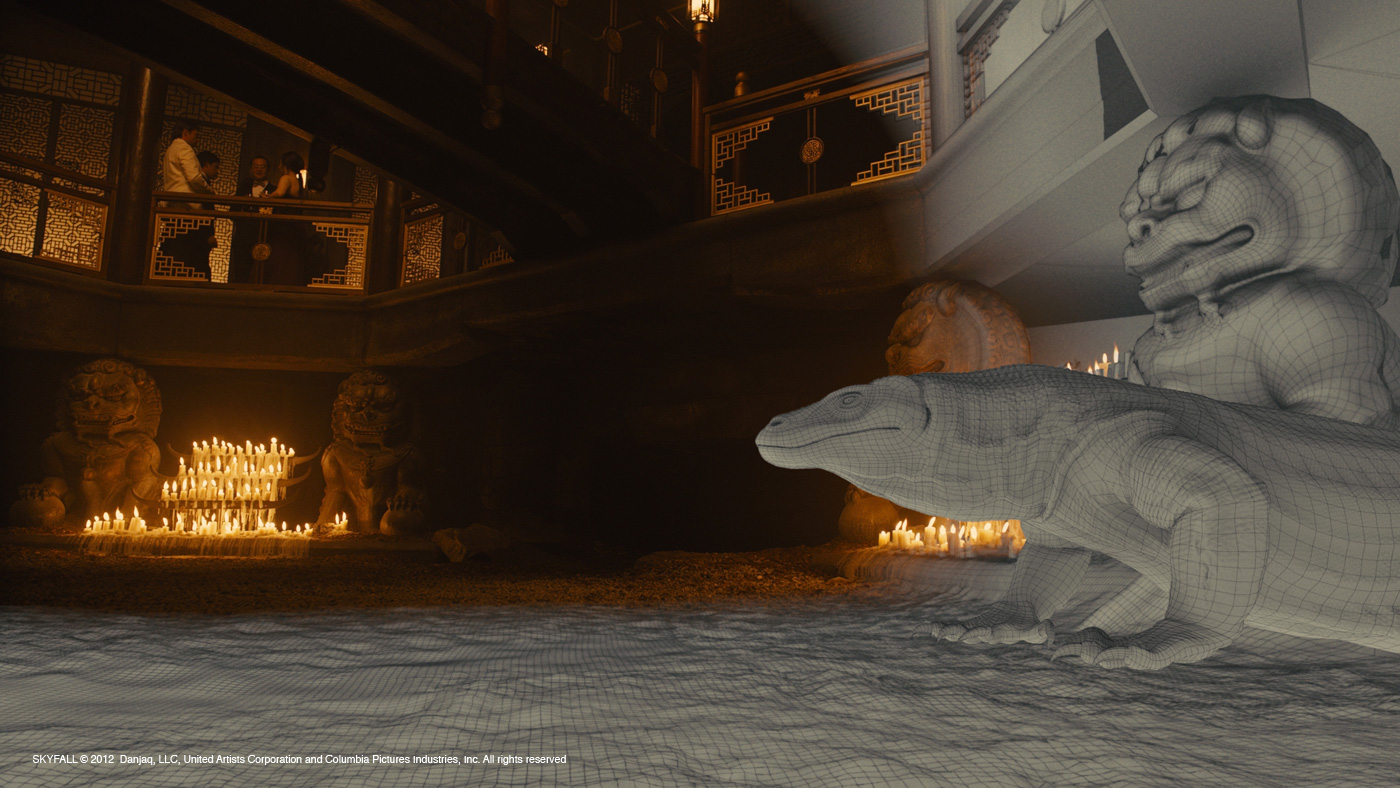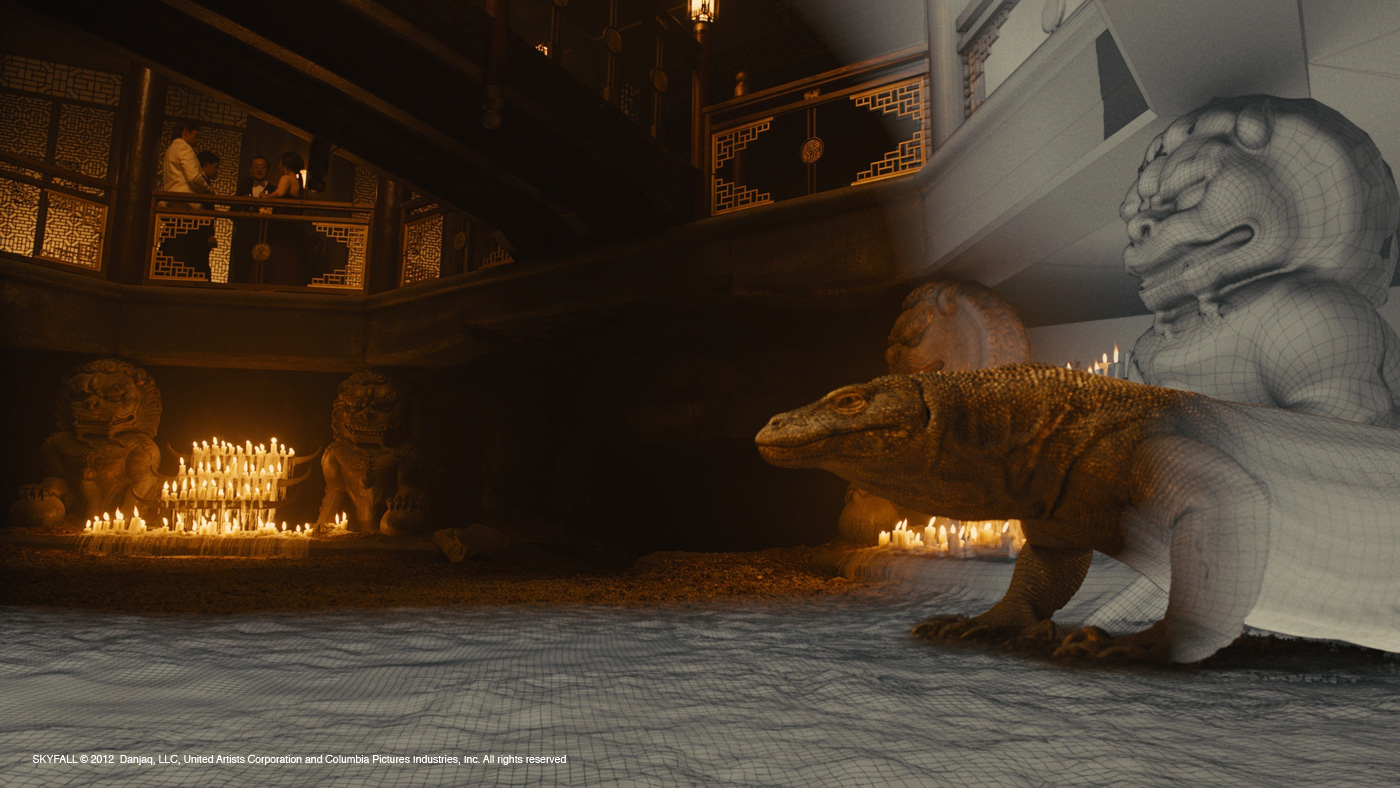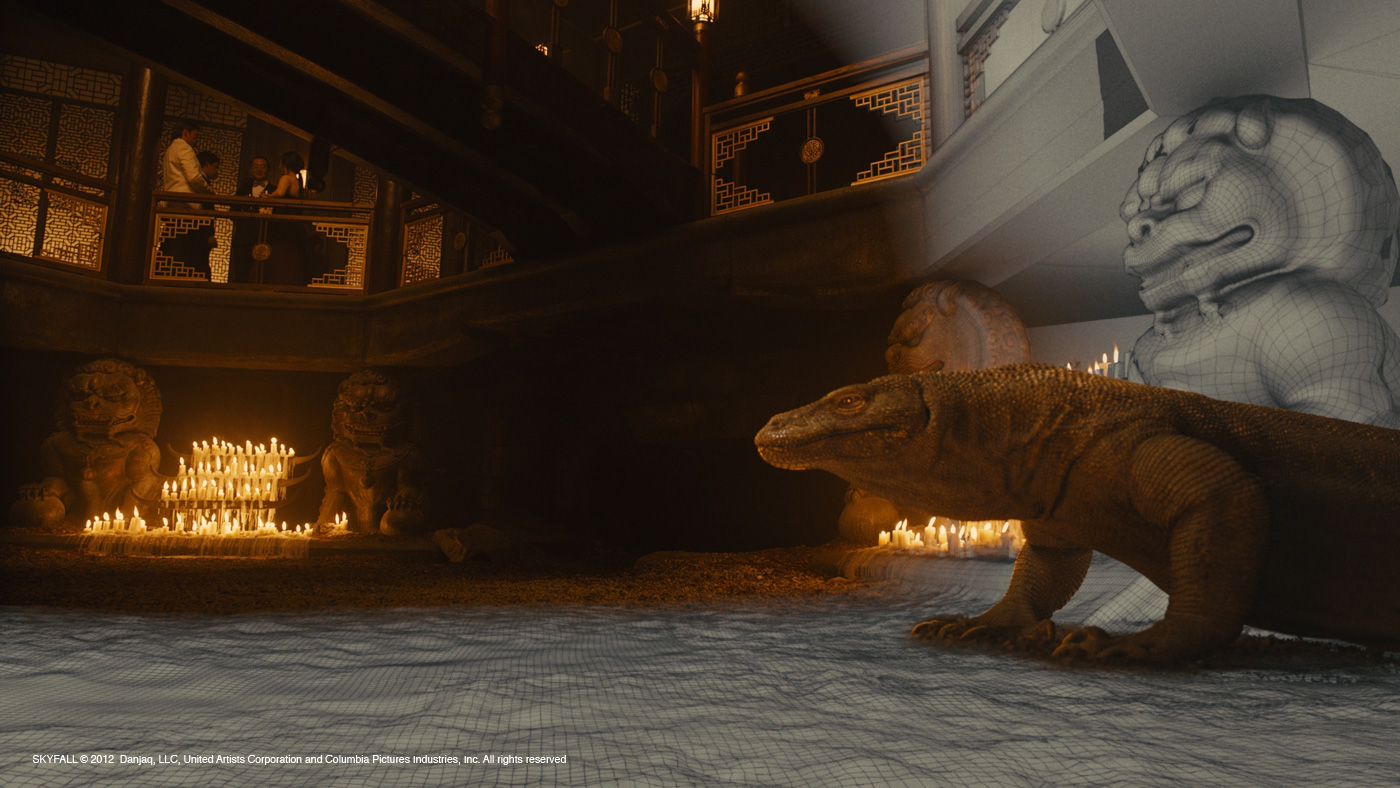Jon Neill joined Cinesite more than 15 years ago. He has worked on many projects such as EVENT HORIZON, LOST IN SPACE, THE HITCHHIKER’S GUIDE TO THE GALAXY or HARRY POTTER AND THE ORDER OF THE PHOENIX. As VFX supervisor, he took care of JOHN CARTER.
What is your background?
I have a background in traditional art and hold a degree in drawing and painting and a post-graduate diploma in electronic imaging. Before I became a VFX supervisor, I held CG supervisor and lighting roles. My credits at Cinesite include overseeing a large portion of shots on Disney’s JOHN CARTER, WOLVERINE, HITCHHIKERS GUIDE TO THE GALAXY and 3 of the HARRY POTTER films.
How did Cinesite get involved on this show?
The VFX production team invited us to bid on several sequences, including the Komodo dragon, and to undertake a test.
How was the collaboration with director Sam Mendes and Production VFX Supervisor Steve Begg?
It was quite straight forward because they both knew what they wanted. It was just a matter of working up the shots until we got what they wanted. There were no moving goal posts, which can be quite rare in this industry.
What have you done on this show?
We were asked to complete 4 main VFX sequences, 3 of which were in the London Underground system. The Platform/tunnel chase, where we were required to do mainly tunnel and CG train extensions with some driver replacement. An escalator chase which required set extension, set replacement and rig removal. The Catacomb train crash again we had a set extension beyond the arches, lots of camera and rig clean up, dust and debris enhancement. Finally we had the Komodo dragon fight sequence. Here we created full cg photo real Komodo dragons that interact with the environment and the actors.
At one point, James Bond fights a villain and they find themselves facing Komodo Dragons. How did you create and rig these dragons?
The director wanted the action to be low key, just komodo’s lurking in the background waiting to pounce. The director and DP wanted the sequence to have a dark, dramatic and sinister atmosphere where the komodos were silhouetted, rim lit and looming out of the shadows.
This suited us because we immediately had a creative lighting scenario to work from. We wanted to exaggerate their aggressiveness so we added scars to their head and bodies. The clients also wanted them to have eye glints, like cats eyes in the headlights, this was to make them even more evil looking and also so that the audience could pick them out in the dark. But we had to make sure they stayed on the sinister side and not become too fantastical.
We were lucky that London Zoo had 2 Komodo dragons in captivity. One was hand reared and so was friendly enough for the keepers and our Photographer to get in with him. They had a room attached to the main enclosure connected by a trap door. So we were able to get in and set up our lights.?We covered the ceiling with a white drape and also painted the walls white,?this gave us good light exposure across the whole room.?We needed to get in close and of course we couldn’t make the animal stay completely still, so we shot hand held. The close, high res images allowed us to see clearly how details like the eyes were made up and how the scales changed pattern when they met all the different features. It also gave good reference for our shader and look development team. Although the ref we got at the zoo was vital for the texture we felt that he looked a little too healthy and cute. Because he was looked after he was clean and well fed. So we looked online to see how the wild komodo dragons differed.
Is an animatronic used on the set for close up shots and lighting references?
We had a stuffie for composition and lighting shadow reference. All the shots were full cg.
How did you manage the animation and lighting challenges?
For the animation reference we used a combination of online and video we shot at the zoo. For the online reference we got a variety of komodos in different environments and on different ground surfaces and lighting conditions. The fingers, toes seemed lifeless, all the movement was in the wrist and elbow, the toes just dragged along. We could see how the jiggle looked on the stomach, neck and legs on the bigger komodos.
For the zoo reference we set up 3 cameras at different heights and angles. The zookeepers threw in dead mice and the komodo scuttled around after them. Because this komodo was brought in from the wild we couldn’t go in with it, the keepers wouldn’t go in either. We synced the cameras with a clap of the hands and let them run. This allowed the animators to have an all round view of what was going on.
The lighting was generated by four banks of flickering candles and an overhead paper lantern high up on the ceiling. For the candle banks, we took still HDR images and made a cycle which was mapped onto area lights to give interactive flickering to the komodo’s and their shadows. Because we had the cg set, we could attach hdri images to the geometry. This gave us a light rig that matched the real set. We used area lights to ensure proper shadow density and falloff. Lights sources like the paper lanterns on the bridge were attached to an incandescent shader and mapped with HDRI images.
James Bond is chasing the big bad guy in a London Underground impressive sequence. Can you tell us more about the shooting of this sequence?
The platform chase sequence features shots filmed on location in Charing Cross Underground and on set at the Pinewood 007 stage cut together. The scene follows Bond running and jumping on the back of a tube carriage. Two practical train carriages were built by production on the Pinewood 007 stage and rigged to travel down the rails.
What was your work on the escalator chase?
The escalator chase sequence required rig removal and set extension. The rig consisted of a sledge attached to a wire and a mechanism which lowered the sledge from the top of the escalator, this was covered in green screen. This was for Bond and Silva to slide down the escalator in a controlled, safe way. The middle of the escalator was modified to be smoother at the bottom, all sharp objects covered over. We would need to put these objects back in post.
Can you tell us more about the CG train and tunnel extensions?
These shots would require mainly tunnel and CG train extension with some driver replacement. We shot some of the sequence at Charing Cross and the rest at Pinewood. Half a practical train carriage and a large part of the platform and tunnels were built on the 007 stage. At the real station we took reference stills and lots of measurements. But we used the reference from the set as this was what we would need to extend.
The team augmented the physical effects by extending the carriage, adding other CG carriages with passengers composited in, and compositing the train driver into the scene.
The chase ends with a spectacular train crash. How did you work with the practical FX?
This is part of the catacomb sequence that features an explosion and a dramatic train crash that was devised by SKYFALL’S special effects department. Shot on the Pinewood 007 stage, a practical train was rigged to the ceiling and crashes into the scene from the corner. To enhance the look, we created a digital set extension to expand the arches in the catacomb and give it a greater sense of depth. We also digitally removed the camera crew that was positioned in front of Bond as the train comes crashing down, as well as the rig the train was suspended on, and enhanced the practical dust and debris with 3D particles.
What was the biggest challenge on this project and how did you achieve it?
With a Bond film the challenge is always to ensure the reputation the franchise holds for performing physical effects and stunts is upheld. So, all the digital effects we created had to be photo-real to complement the productions.
On SKYFALL there was a reluctance to use green screen onset unless absolutely necessary. I learned that in some situations just using roto instead could create a better result. Roger Deakins (DoP) didn’t want green contaminating his lighting so preferred black or grey. In the train crash sequence where there were 10 cameras set up, I couldn’t put up green or black screens as they would have been in the way of at least two cameras and we didn’t know what shots they would end up using. So we shot Bond with all 10 locked off cameras then we shot the crash with all 10 cameras and roto’d Bond in. This meant that Bond was in the exact lighting; he was convincingly there, more so than if we shot him in a green room later.
Was there a shot or a sequence that prevented you from sleep?
The komodo shot going in to bite the ankle didn’t look right up until 2 days before deadline. So we re-rigged, re-animated, re-lit and re-comped, all in 2 days. It worked though.
What was your feeling to be part on a James Bond movie?
It’s a fantastic feeling to be part of a Bond film. SKYFALL marks the sixth Bond film that Cinesite have worked on and it’s always a pleasure to be involved with the franchise.
What do you keep from this experience?
That it’s great to work on a set where the crew is so organised, it makes my job a lot easier.
How long have you worked on this film?
We started working on the film in January this year (2012) and delivered it in September.
How many shots have you done?
We worked on nearly 100 shots.
What was the size of your team?
At its peak, we had 40 artists work on the film.
What is your next project?
We have a lot of exciting films we are currently bidding for, and hope to announce soon.
What are the four movies that gave you the passion for cinema?
As well as the usual films (Like 2001 & BLADE RUNNER), LAWRENCE OF ARABIA, VERTIGO, THE GODFATHER, DUNE, even with the rough at the edges FX.
A big thanks for your time.
// WANT TO KNOW MORE?
– Cinesite: Dedicated page about SKYFALL on Cinesite website.
© Vincent Frei – The Art of VFX – 2012




